After taking a year off due to COVID, the River Bend Gun Club (RBGC) Run n Gun was back for 2021. As a little history, this was the first RnG match I ever attended (read about 2018 match here), so the River Bend events will always be special for me. The extra year of planning meant the match director, Bruce Perry, upped the ante in terms of shooting. The match was very technical, requiring a strong understanding of your rifle zero, close-range offsets, 90-degree offsets and weapons manipulations. While there was a 10K option (basically running the course twice), I opted for the 5K and only seeing the stages once. Also I’ve been successful in the 5K the past two iterations, so why not go for the hat trick?
This year’s match ended up being my ninth Run n Gun competition, but in looking back on my gear loadouts I’m not too far off of my original setup (2018, 2019). Compared to 2019 the rifle is the same, minus a reticle update in the scope, and my pistol went from a Glock to Staccato. My extra kit went from the Kavu rope bag to a Hill People Gear chest rig for better load carriage. In short, the original concept of gear layout worked well for me and has only evolved slightly, not dramatically.
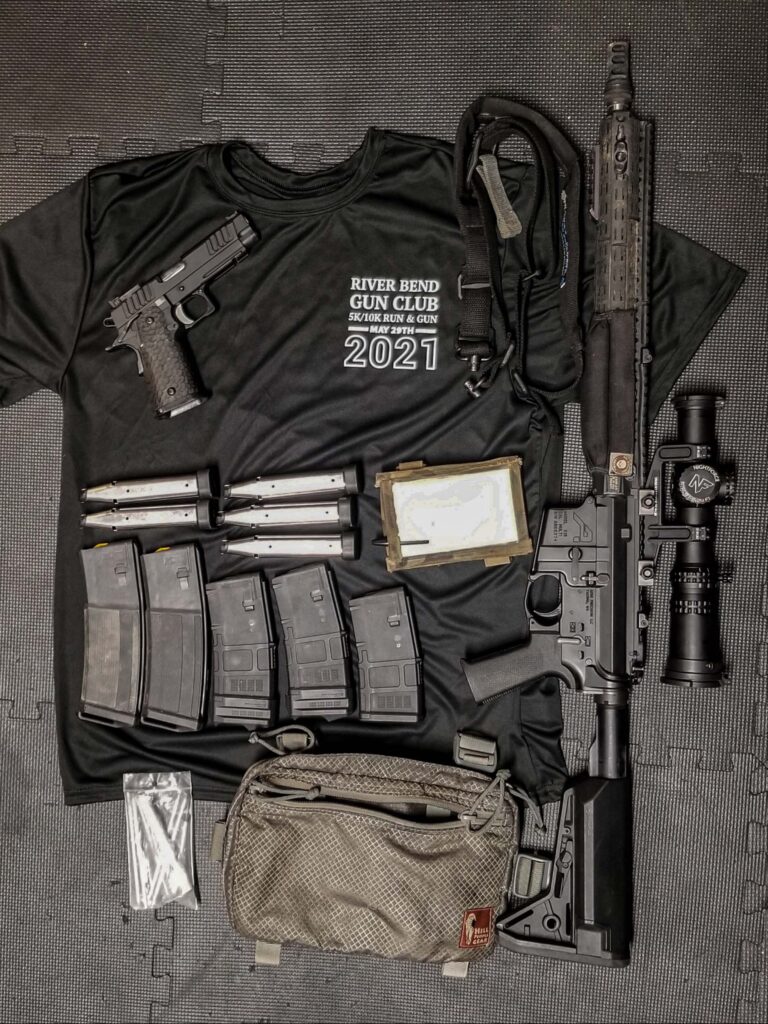
For this year Bruce notified each runner of their launch window and which briefings were available to attend. I was slotted in the 12-2pm group and had a brief at 11:30am. After pulling into the parking lot around 11am, I found my name on the list for a 12:05pm launch. It was great to catch up with Bruce and a few others that were around until the briefing started. Once the safety briefing/overview of the event was concluded, it was time to start kitting up. The start/stop line was located at the building/overhang area of River Bend’s cowboy town.

Once the clock rolled to 12:05pm, it was off to stage 1 for a mostly down hill run about a third of a mile long.
Stage 1
I don’t know what the stage name was, but V-TAC Mind Games seems most appropriate. Upon the start signal, a set of cards is overturned revealing which target array, starting port on the barricade and direction of movement were required. Each target array had a set of four targets that needed to be engaged, one target per port. After the first target from the designated port was hit, the direction drawn determined if you moved up or down from there. Once that array was successfully engaged the shooter retrieves another set of information until each of the four target arrays is completed or time expired. The targets were about 20-25 yards away, just a couple inches of polymer hanging on a strap that needed to be hit. The ports used included upright, diagonal and two 90 degree positions.

The task was simple in execution, but with the changing of ports and keeping up with the targets engaged it was a little frazzling. My understanding is only a handful of shooters finished this before time expired. To keep up with which target was to be engaged, I worked the arrays in a sequence of top left/right, then bottom left/right regardless of port position. Additionally, because the close range and then with 90 degree offsets, the target hold was constantly changing to hit the target. I scrambled up, down and around but got this stage done in 140.68 seconds.

Next was a more “direct” route to the High-Power range, which included climbing the hill behind the firing point to get to the stage. Another third of a mile total, but lots of uphill to get there and some entangled ropes covering the bridge at the creek crossing. Awaiting us at the top was an RO to check us for a clear rifle and pistol before scaling a 6ft wall to begin our wait time.
Stage 2
The second stage was the advertised 600-yard stage of the match. With my long-range experience I enjoy stretching out the carbines, but for some it can be a bit difficult. Before poking at the long target, a standing off-hand shot had to be made at a 100-yard reduced size IPSC target. Then a sprint to the shooting platform for the full-size IPSC target at 600. This was repeated a total of five times. Skipping a target wasn’t allowed, so a shooter had to stay on a particular target until it was hit.

I fired more shots than I wanted, but I was able to connect on everything. The wind was kicking up and variable, my misses were from chasing the wind. My wind holds ranged from center for a direct headwind to a Mil-Radian off the right for a 6mph crosswind (this equated to several target widths worth of wind). For the match I brought a couple magazines of Hornady 73gr ELD-M ammunition and they did their job for me. It took 130.44 seconds to complete this stage.

The run to stage 3 was roughly .4 miles, with a big downhill followed by an uphill climb to the stage.
Stage 3
Our third stage was similar to one from the 2019 event, referred to as “The Box”. The shooter started crawling under a wire obstacle to proceed to the shooting area. The rifle position included four ports inside of a plywood box, requiring three shots per port on a 100-yd target. Any misses had to be made up on a 35-ish yard pistol target.

My shooting was good for the first three ports, but I shanked a few shots on the last one and required a few make-up pistol shots. I did have one malfunction on the right-most port from the rifle being so close to the wood. After the rifle shooting was finished, I took a few more shots than I wanted on the longer pistol plate but finished the stage clean in 76.79 seconds.

Heading back to stage 4 involved retracing the up/down hill from the High Power Range (but around the hill on the road instead of a path in the woods), then re-crossing the rope-covered bridge, finally running on pavement for about .8 miles in total.
Stage 4
Our pistol-only stage started with a surprise, beginning by downloading a magazine by 10-rounds. On the clock, these 10-rounds were stuffed back in before engaging a left and right array of eight plates with left and right hands respectively. The plates were far enough away that getting sloppy on the sights, being tired and any jerking the trigger resulted in a miss. I fired enough extra rounds that I reloaded when I changed hands, but finished the stage in 53.38 seconds.


With stage 4 completed, we had a half-mile run back to the start line, but continuing past it to the bottom of the cowboy town hill. Stage 5 and 6 were located in adjacent pits.
Stage 5
Our fifth stage was another repeat from 2019, but with smaller targets. Essentially the shooter started by loading the pistol and hitting a small IPSC target before running to the rifle box. There another polymer target awaited for a hit, then lots of repeating. In total, ten pistol and ten rifle hits were needed to clean the stage.
My run started with a little rushing on the pistol and needing 2-3 shots to get a hit. By mid-run however, I found my groove and was only needing one shot to get the hit. Time to finish was 112.36 on this one.
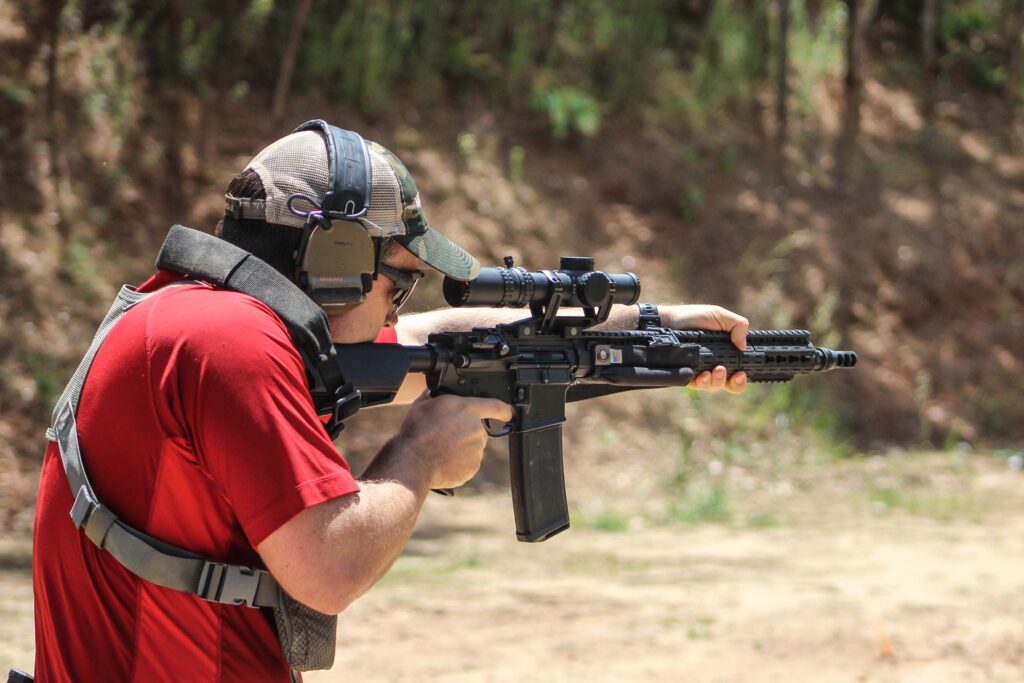
Stage 6
The final stage was another mind-game with varied positions. Before shooting, an engagement order was randomly selected for determining the sequence of shooting positions with the pistol. Then a drag of a simulated dummy was performed before shooting. Each paper target needed two A/B zone hits to clear the target. Another sequence was drawn, then another dummy drag before engaging close-range polymer targets from the assigned positions with the carbine. My run was going well until I found out one of my pistol shots that I thought was in, was indeed 1/2″ outside the A-zone. While my time was 55.82, it technically made the run a DNF.
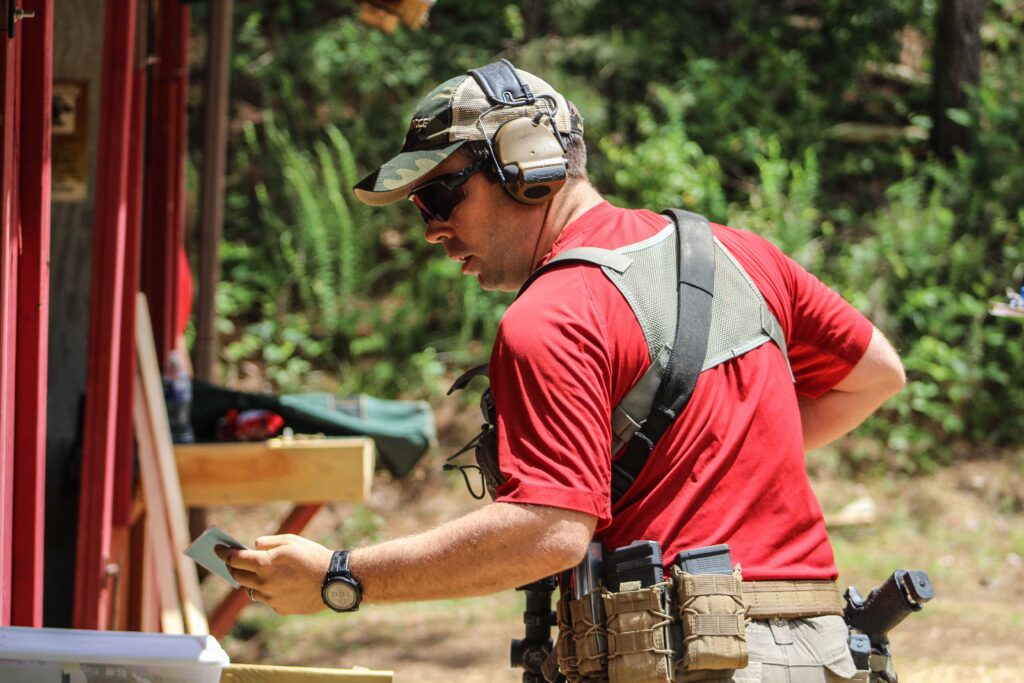

The final run was an uphill sprint to the end to get across the finish line.
Final Thoughts
My total elapsed time was 2 hours and 35 minutes on the course. Having a mid-day launch, I found some waiting at each stage but nothing excessive. For what it’s worth, the backups/waiting can hurt more than help with cooling off too much while waiting, and/or not bringing enough water. I hydrated heavily before the match, but still brought a 1/2 liter of water in a small runners bottle in a thigh pocket. It worked out to be just right, but if it would have been 10-20 degrees hotter more water would have been needed.
Speaking of wait times, the procedure for those unfamiliar is to check-in at the stage, where you’ll be cleared on your rifle/pistol and then you start your stopwatch to accumulate wait time. As a runner you are supposed to freeze as if you had run up, minus consuming water. If you want to fiddle with your gear, stopping your wait time to make adjustments/reload mags/etc is required as that should be on your run time. At the end, any accumulated wait time recorded by the ROs is subtracted from your total run time.

The shooting this year was very technical and not easy. There was a lot of 90-degree shooting and shots requiring knowledge of your close-range offsets. The pistol shooting was on smaller targets, with a fair amount at 20+ yards. I was happy with my rifle shooting but in reflection this would have been a great match to run a pistol with a red dot sight.
My final round count for the match was just shy of 70 rounds of pistol and just over 100 rounds of rifle. I didn’t time out on anything, but didn’t shoot my cleanest. Because of that, my usual strategy of twice the expected round count plus a few more worked out, as I finished with a 20-rd rifle magazine and about 30 rounds of pistol ammo.
The RBGC RnG got me into the Run n Gun sport, and I’m fortunate to have attended each iteration. I would encourage anyone interested to give it a go, as you’ll definitely learn something and put your gear, physical abilities and wits to the test. Finally, there is a great community around the sport, that is welcoming of all.
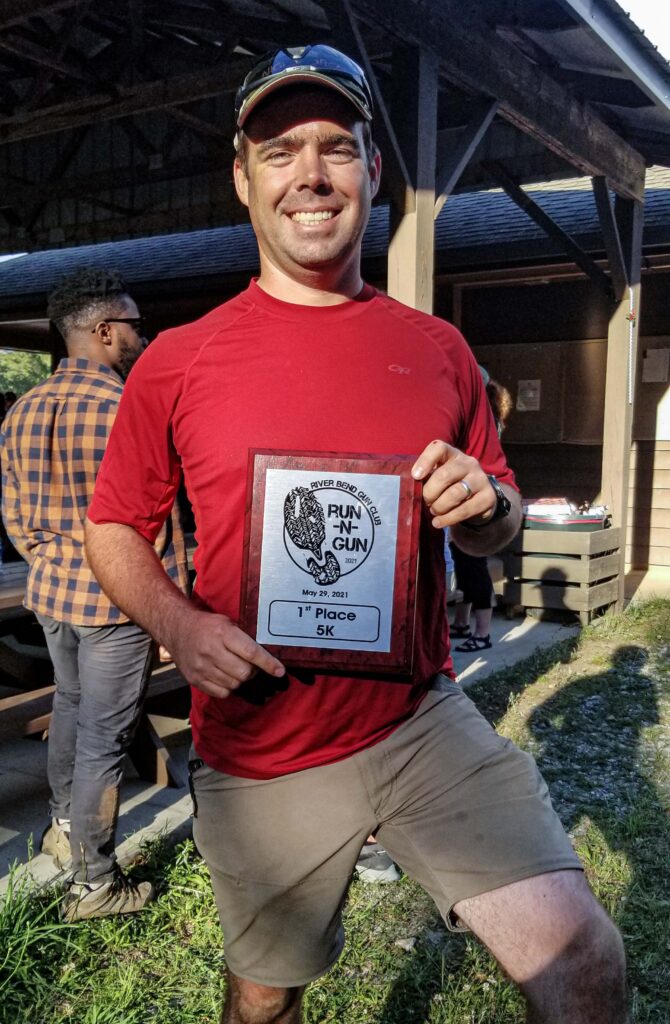
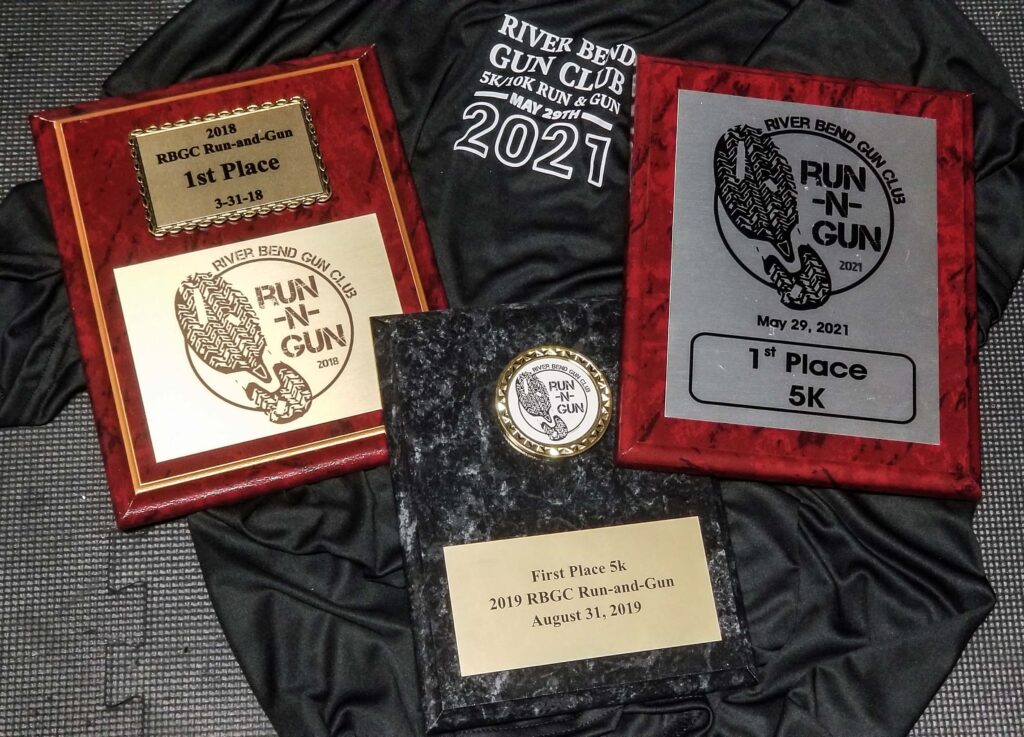
Special thanks to none other than Jimmy Nutt of Run n Gun Nation for the excellent photography! More pics of the event: https://www.flickr.com/photos/170574269@N03/albums/72157719306879999
Don’t forget to check the event listing for other 2021 Run n Guns!


Hat trick!
Great right up! For this match, or in general, got any tips (link to article or video) on determining 90 degreee offsets?